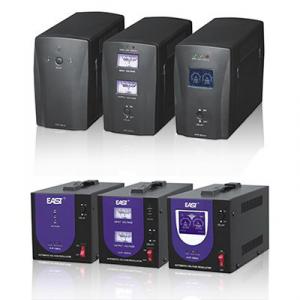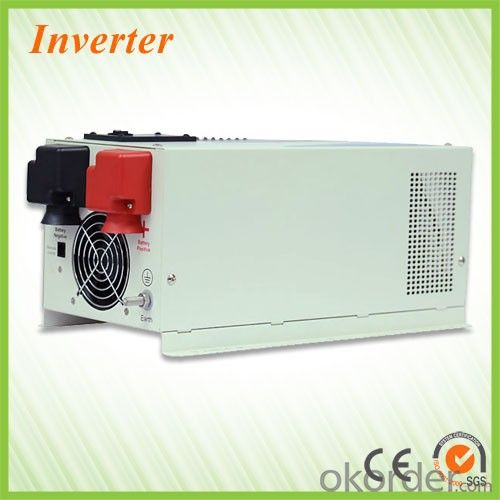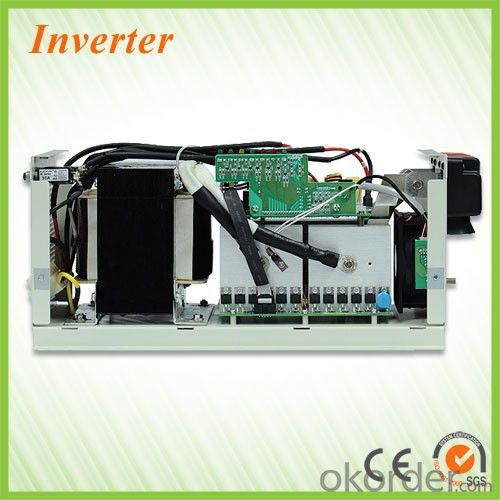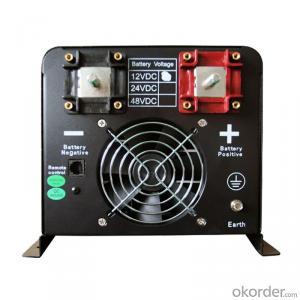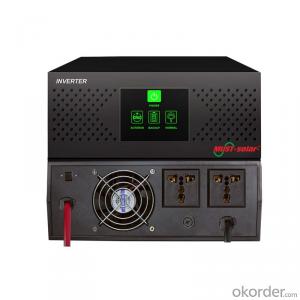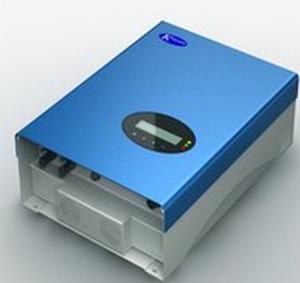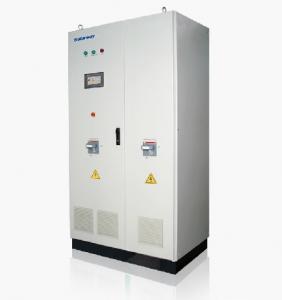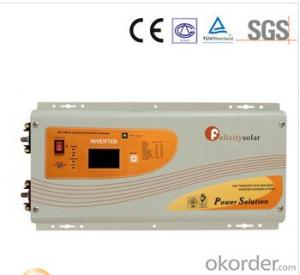100 Amp Solar Inverter AVR 500-5000VA 2024 Very Popular CE Excellent Quality Approved
- Loading Port:
- China main port
- Payment Terms:
- TT or LC
- Min Order Qty:
- 1 pc
- Supply Capability:
- 1000 pc/month
OKorder Service Pledge
OKorder Financial Service
You Might Also Like
| AVR 500-5000VA |
AVR series AC automatic regulators apply the advanced control technology with well qualified components It has the features of wide input voltage compatibility, high reliability, output voltage stabilizing, energy saving ect....; it has over voltage and low voltage protection and delayed output protection ect.. it could supply stabilized power to lights, TVs, air-conditioners, refrigerator, computers and duplicating machines and other household equipment in schools, offices, hotels, meeting rooms where the stabilized voltage is needed. |
● Classic series, EI transformer, relay type
● Input and output voltage LED/Meter/LCD display
● High temperature protection
● Circuit breaker protection
● Efficiency: 98%
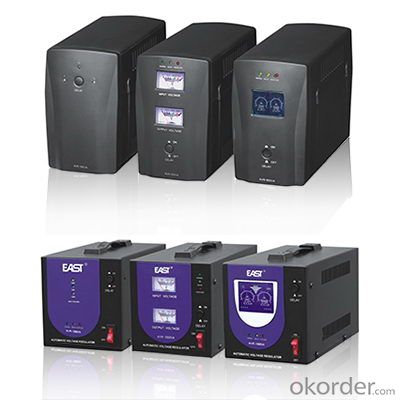
MODEL | 500VA | 800VA | 1000VA | 1500VA | 2000VA | 3000VA | 5000VA | |
Input | ||||||||
Phase | Single Phase+N+GND | |||||||
Voltage Range | 140Vac-270Vac (Option:100-270V) | |||||||
Output | ||||||||
Voltage Range | 200-240V(Empty Load) | |||||||
Frequency | 50/60Hz | |||||||
Over Voltage Protection | 250V±5V (Overvoltage indicator on, Output off ) | |||||||
Undervoltage Protection | 180V±5V (Overvoltage indicator on, Output off ) | |||||||
Others | ||||||||
Efficiency | ≥95% | |||||||
Display Mode | LED indicator light; Pointer voltmeter / LCD display (selectable) | |||||||
Input/Output Setting | Plug/ Socket | Terminal blocks | ||||||
Time-Delay | Short delay : <3 secs; long delay: 3mins | |||||||
Output Short Circuit Protection | Fuse / Breaker | |||||||
Waveform Distortion | No additional waveform distortion | |||||||
Insulation Resistance | >2MΩ | |||||||
Dielectric Strength | Low frequency sine voltage 1500V for 1 minute ( without phenomena of breakdown and flashover ) | |||||||
Ambient Temperature | -10℃~±40℃ | |||||||
Relative Humidity | ≤95% | |||||||
Working | Continuing Working | |||||||
Dimension(W×D×H) mm | Metal Case | 125×230×135 | 143×258×185 | 210x291x201 | 229x345x220 | |||
Plastic Case | 100×215×160 | —— | ||||||
Net Weight (kg) | Metal Case | 2.5 | 2.9 | 3.1 | 5.4 | 6.5 | 9.2 | 13.0 |
Plastic Case | 2.1 | 2.5 | 2.7 | —— | ||||
Packing Dimension (W×D×H) mm | Metal Case | 176×280×207 | 192×310×252 | 262x343x273 | 271x396x303 | |||
Plastic Case | 145×265×229 | —— | ||||||
Gross Weight(kg) | Metal Case | 2.8 | 3.2 | 3.4 | 5.6 | 6.7 | 9.6 | 13.55 |
Plastic Case | 2.4 | 2.8 | 3.0 | —— | ||||
Quantity/20ft | 2400PCS | 1600PCS | 900PCS | 730PCS | ||||
· Q. What is an UPS and What it is for ?
An uninterruptible power supply (UPS) is a device that allows your computer or telephone switch or critical equipement to keep running for at least a short time or longer time when the primary power source is lost. It also provides protection from power surges, spikes, brownouts, interference and other unwanted problems on the supported equipment.
· Q. How long the UPS to run when power goes?
This can take 3 paths.
1.You can pick a UPS that is rated for pretty much the full VA you need so it will be running at 100% of capability and will thus last 'n' minutes.
2.You can pick a UPS that is rated at a much higher VA value than you really need so, for example, is running at 50% of capability and will thus last for longer than the UPS from option 1.
3.You can use extra external battery packs to run for longer. If charging capability allows, the more and the bigger batteries you take with, the longer time UPS runs.
or using a generator after about 6 hours, it will be more cost-effective, with a short runtime UPS to bridge the generator start-up gap.
- Q: What is the difference between a string inverter and a micro inverter?
- A string inverter is a type of solar inverter that is connected to a series of solar panels, converting the DC power produced by the panels into AC power for use in homes or businesses. A micro inverter, on the other hand, is installed on each individual solar panel, converting the DC power into AC power at the panel level. The main difference between the two is that a string inverter handles the entire string of panels, while a micro inverter operates on a per-panel basis. This means that micro inverters offer advantages such as increased energy production, better module-level monitoring, and improved system flexibility, but they can also be more expensive and complex to install compared to string inverters.
- Q: What is the role of a solar inverter in a solar-powered ventilation system?
- The role of a solar inverter in a solar-powered ventilation system is to convert the direct current (DC) generated by solar panels into alternating current (AC) that can be used to power the ventilation system. It ensures that the electricity generated by the solar panels is compatible with the system's requirements and can efficiently operate the ventilation components.
- Q: Can a solar inverter be used with batteries for energy storage?
- Yes, a solar inverter can be used with batteries for energy storage. In fact, this combination is commonly used in residential and commercial solar systems to store excess solar energy generated during the day and use it later when the sun is not shining, such as at night or during power outages. The solar inverter converts the DC power from the solar panels into AC power for immediate consumption or for charging the batteries. The batteries then store the excess energy for later use, providing a reliable and continuous power supply.
- Q: Can a solar inverter convert DC power to AC power?
- Yes, a solar inverter is specifically designed to convert the direct current (DC) power generated by solar panels into alternating current (AC) power that can be used to power household or commercial electrical appliances and be fed back into the grid.
- Q: What is the role of power factor correction in a solar inverter?
- The role of power factor correction in a solar inverter is to improve the efficiency and performance of the inverter by correcting and optimizing the power factor of the electrical system. By adjusting the phase relationship between voltage and current, power factor correction ensures that the inverter draws and supplies power more effectively, reducing energy losses, improving power quality, and minimizing harmonics in the system. This helps to maximize the overall power output and reliability of the solar inverter, leading to better energy conversion and utilization.
- Q: How does a solar inverter handle variations in grid voltage?
- A solar inverter handles variations in grid voltage by continuously monitoring the voltage levels and adjusting its output accordingly. It has built-in voltage regulation and control mechanisms that help maintain a stable and consistent output voltage, even when there are fluctuations in the grid voltage. This ensures that the solar inverter can efficiently convert the DC power generated by the solar panels into AC power that is synchronized with the grid, regardless of any voltage variations in the grid.
- Q: What are the methods of photovoltaic grid-connected inverter control
- The square wave output of the inverter using pulse width modulation integrated circuits, such as SG3525, TL494 and so on. Practice has proved that the use of SG3525 integrated circuits, and the use of power FET as a switching power components, to achieve high performance of the inverter, because the SG3525 has a direct drive power FET capability and has an internal reference source and operational amplifiers and Undervoltage protection, so its peripheral circuit is very simple.
- Q: Can a solar inverter be used in off-grid systems?
- Yes, a solar inverter can be used in off-grid systems. In off-grid systems, solar inverters are essential as they convert the direct current (DC) generated by the solar panels into alternating current (AC) that can be used to power appliances and devices. They also play a crucial role in managing the battery storage and regulating energy flow in off-grid setups.
- Q: Can a solar inverter be used with a solar-powered waste management system?
- Yes, a solar inverter can be used with a solar-powered waste management system. A solar inverter is used to convert the direct current (DC) electricity generated by solar panels into alternating current (AC) electricity that can be used to power various appliances and systems. In the case of a solar-powered waste management system, the solar inverter would be an essential component to convert the DC power generated by the solar panels into the AC power required to operate the waste management equipment.
- Q: Are solar inverters compatible with smart home systems?
- Yes, solar inverters are compatible with smart home systems. Many modern solar inverters come with built-in communication capabilities, such as Wi-Fi or Ethernet connectivity, which allow them to integrate seamlessly with smart home systems. This enables homeowners to monitor and control their solar energy production, consumption, and storage through their smart home devices or applications.
Send your message to us
100 Amp Solar Inverter AVR 500-5000VA 2024 Very Popular CE Excellent Quality Approved
- Loading Port:
- China main port
- Payment Terms:
- TT or LC
- Min Order Qty:
- 1 pc
- Supply Capability:
- 1000 pc/month
OKorder Service Pledge
OKorder Financial Service
Similar products
Hot products
Hot Searches
Related keywords
